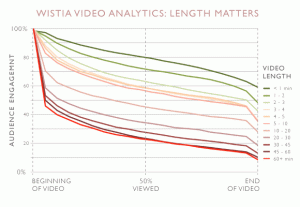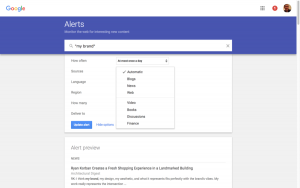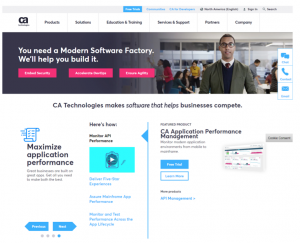As an executive or leader in your organization, you’re managing many things: the company’s image, numerous projects, and a talented group of people.
But you’re also managing many other important things, including disruptions from both inside and outside of your industry, how others perceive your company as you manage or even leverage those disruptions, and several other things you may not even be aware of. For many people, these “other” things are just part of the job, how things have always been done, and the expected stressors of business.
But do they have to be that way?
Disruptions Are Distractions to Manage
To start, executives and leaders at organizations must become better at managing disruptions. In today’s marketplace, change is coming at us fast, and it is only getting faster every day.
One thing we know for sure is that most disruptions come from the outside in—external factors impact the organization, like we saw in March 2020 with the COVID-19 pandemic and global lockdown, which affected many nonessential businesses. This caused people to react, crisis manage, and continually put out fires.
But to be a strategic asset to your company, you can’t simply be a crisis manager; you also have to become an opportunity manager. You accomplish this by becoming an Anticipatory Leader in order to transform your organization into an Anticipatory Organization.
To be an opportunity manager and strategic asset for your organization, distraction is the enemy, and, unfortunately, we have never been more distracted than we have become in this past year, preoccupied with the effects of the global pandemic. Not only is everyone in your organization likely distracted thanks to disruptions, but everyone in your competitors’ organizations is as well.
In a way, this is actually good news, because it means there’s a huge competitive advantage in pulling out of that mess of distraction by way of looking at disruptions much differently than your competitors with an eye of anticipation!
The Switch to Anticipation
Transitioning your and your organization’s mindsets from one of reaction to one of anticipation takes work, but is not as difficult as you may feel.
What an Anticipatory Leader must do is help their staff learn to look at these disruptions and learn to see them before they disrupt. I know that might sound a bit like fortune-telling, but trust me when I say it is very plausible!
How we do this is by implementing what I refer to as my Hard Trend Methodology. In this, we look at what I refer to as Hard Trends and Soft Trends. Hard Trends are future certainties that you cannot change, such as the positive reality that this pandemic will end when we have a vaccine. Soft Trends are trends we can influence, such as the “new normal” that came with this pandemic and what that means for each of our organizations.
When you know how to differentiate between Hard Trends and Soft Trends, your organization now knows what disruptions will come with those and how to leverage them for opportunity and advantage. Likewise, this gives you and your organization a chance to innovate in an effort to pre-solve any problems that come with these disruptions before they occur.
For example, during the pandemic, nonessential businesses were closed; however, many found innovative ways to continue to operate and serve their customer base in order to stay afloat and become essential in their own way. This allowed their organization to also become a positive disruptor, taking the wheel of disruption and effectively managing it.
Manage Perceptions
Another thing that executives and leaders must consider is others’ perceptions of us, especially as we rebuild our economy after COVID-19 and manage disruptions.
You may be wondering why managing perception is important; shouldn’t you focus on your customers you do have during times of crisis and worry less about how others perceive what you are doing? You can’t please everyone after all, right?
Absolutely not! You should always consider what others’ perceptions are of your organization because perception is often more important than reality, especially today. Given our access to social media and apps like Yelp or customer review features on Google, word travels fast. New normal means new customers for many of us.
In a past blog, I referenced how convenience stores transformed to necessity stores in the wake of people not buying gas as much as we locked down to slow the spread of COVID-19, discovering new customers in those who were unable to find their necessities at the grocery store due to panic buying. This is an example of an Anticipatory Organization managing disruptions, as referenced above; however, they’re also managing others’ perceptions of their operation at the same time.
How do you think the world would react if a convenience store owner shut down during the pandemic and spent more time turning people away, bitter that they were losing money they ordinarily make on gas sales and wallowing about their struggles to a mother trying desperately to find Tylenol for their child’s fever? I doubt that customer would ever return.
We’re always looking for new customers, so always be conscientious of the image you project to the world. A good way to gauge and thus manage your perception is to ask yourself, “How do I perceive myself?” Do you perceive yourself as trying to keep up or protect and defend the status quo? Or are you trying to integrate the new in order to discover new customers in times of peril?
Manage Disruptions
At the end of the day, being able to manage perceptions and disruptions is just as important as being able to manage people and projects. When you focus on managing what’s important, you’ll open yourself up to a whole new world of possibilities.
How you perceive yourself is going to reflect how others perceive you. Likewise, how well you handle disruption says a lot about your organization to customers both old and new, interlocking perception and disruption management in ways never before witnessed.
COVID-19 disrupted everyone; not a single industry was untouched by this unbelievable pandemic. However, how organizations managed this disruption spoke volumes about how they do business. What kind of perception did you and your organization give your customers?
Originally published here.
Business & Finance Articles on Business 2 Community
(28)






